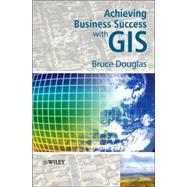
What is included with this book?
| Preface | p. vii |
| Acknowledgements | p. ix |
| Introduction | p. 1 |
| The Spatial Information Industry | p. 7 |
| Background to the Survey | p. 8 |
| Value of the SI Industry | p. 9 |
| GIS Product Usage | p. 13 |
| Spatial Applications | p. 17 |
| Training | p. 19 |
| Spatial Data | p. 21 |
| Imagery | p. 26 |
| Mobile Computing | p. 28 |
| Regional SI Initiatives | p. 29 |
| Summary | p. 30 |
| Introducing the Elements of a GIS Strategy | p. 33 |
| The Traditional IT Strategy Approach | p. 34 |
| The SI Strategy Approach | p. 36 |
| Influences of Disruptive and Distractive Technology | p. 37 |
| Developing the Business Focus | p. 41 |
| Developing the Data/Information Focus | p. 47 |
| Introduction | p. 48 |
| Metadata | p. 48 |
| Data/System Architectures | p. 49 |
| Defining the 'Data Gap' | p. 53 |
| GIS Data Standards and Related Issues | p. 59 |
| GIS Data Interoperability | p. 61 |
| Summary - Data Interoperability | p. 64 |
| Summary - the Data/Information Focus | p. 64 |
| Developing the Organisational Focus | p. 65 |
| Introduction | p. 65 |
| Impact of Organisational Structure on GIS | p. 66 |
| Achieving an Organisational Focus for GIS | p. 67 |
| Business Process Mapping and Re-engineering | p. 69 |
| Training and Support Issues | p. 71 |
| SWOT Analysis | p. 72 |
| Summary - Organisational Focus | p. 73 |
| Developing the Application and Technology Focus | p. 75 |
| GIS Issues | p. 75 |
| IT Issues | p. 83 |
| System/Data Integration Issues | p. 85 |
| Developing the Functional Requirements Specification | p. 87 |
| Developing a GIS Strategy | p. 91 |
| Functional Requirements Specification (FRS) | p. 91 |
| Correlating against the CSFs | p. 92 |
| Developing the GIS Strategy | p. 93 |
| Summary | p. 93 |
| Cost/Benefit Analysis/Return on Investment | p. 95 |
| Broad Costs | p. 97 |
| Broad Benefits | p. 107 |
| Broad Cost/Benefit Summary | p. 113 |
| Business Case | p. 117 |
| Conclusion | p. 117 |
| Selecting a GIS | p. 119 |
| Introduction | p. 119 |
| Selecting a GIS using a Tendering Process | p. 121 |
| The Final Stage of the Selection Process | p. 136 |
| Implementing GIS | p. 139 |
| Staff Training | p. 139 |
| Data Capture and/or Conversion | p. 141 |
| Defining the KPIs (Goalposts) for Successful Implementation | p. 143 |
| Implementing and 'Setting to Work' of the GIS | p. 143 |
| Undertaking a Post Implementation Review | p. 144 |
| Benchmarking | p. 144 |
| Summary | p. 145 |
| The Best and the Worst | p. 147 |
| And the Best is...Google Earth | p. 147 |
| And the Best is (also)...Web 2.0 | p. 148 |
| And the Worst is... | p. 149 |
| Closing Remarks | p. 151 |
| Glossary | p. 153 |
| Index | p. 155 |
| Table of Contents provided by Ingram. All Rights Reserved. |
The New copy of this book will include any supplemental materials advertised. Please check the title of the book to determine if it should include any access cards, study guides, lab manuals, CDs, etc.
The Used, Rental and eBook copies of this book are not guaranteed to include any supplemental materials. Typically, only the book itself is included. This is true even if the title states it includes any access cards, study guides, lab manuals, CDs, etc.